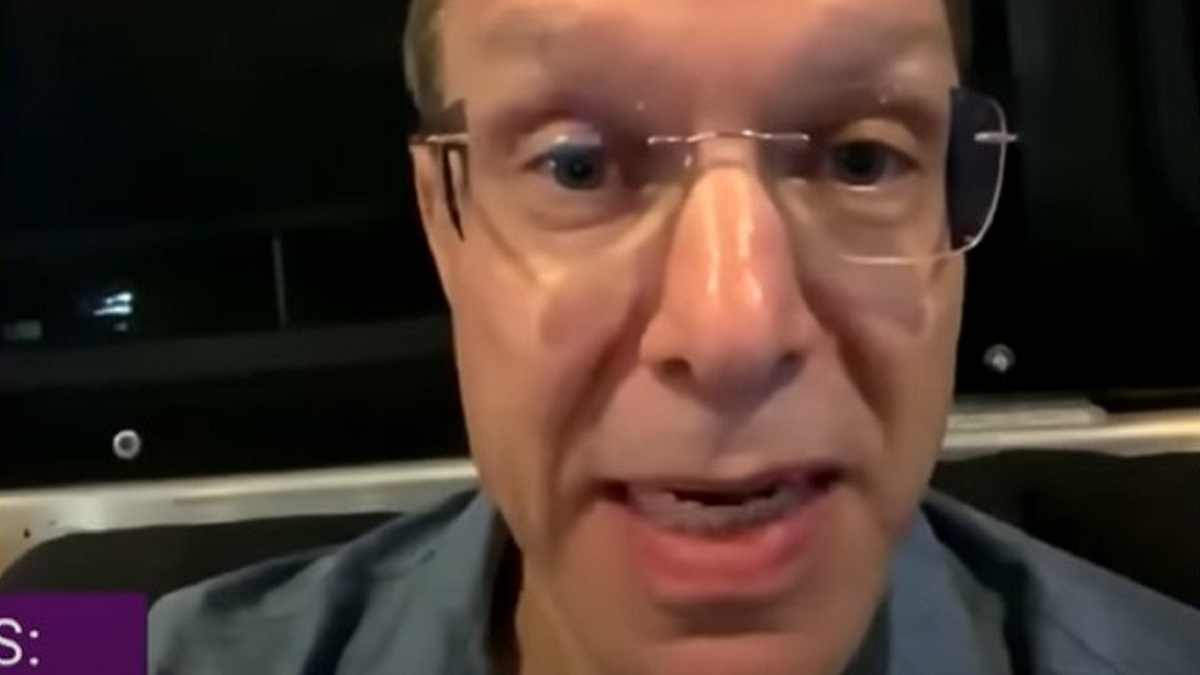
Professor Avi Loeb believes a meteor that crashed in the Pacific Ocean in 2014 could be alien technology. Pic credit: via The Hill/YouTube
Avi Loeb, a professor of astrophysics at Harvard University, announced on June 21 that his team retrieved material from the Pacific Ocean floor that may have come from an alien UFO.
Loeb, the former chair of the astronomy department at Harvard University, believes the material could be proof of a technologically advanced extraterrestrial civilization.
Loeb found 50 microscopic spherules in the Pacific
The team recovered the material consisting of 50 microscopic spherules off the coast of Papua New Guinea in the Southwest Pacific region.
Loeb believes it could be debris from an alien UFO that crashed into the Pacific Ocean years ago.
The spherules are small, dust-like particles, about 0.3 millimeters in size and with a combined weight of 35 milligrams. They are observable only under a microscope.
The team recovered the material from the Pacific Ocean floor with a magnetic device.
The latest news comes after UFO whistleblower David Grusch alleged that the U.S. government retrieved alien UFOs from crash sites.
An alien UFO might have crashed on Earth in 2014
According to Loeb, an object believed to be an interstellar meteor that entered the Earth’s atmosphere on January 8, 2014 (2014-01-08) could be an alien craft.
The object, dubbed IM1, disintegrated in the lower atmosphere before crashing into the Pacific.
[Note: Siraj and Loeb late identified a second interstellar meteor, IM2.]
IM1 composition different from man-made alloys and asteroids
Astronomers believed IM1 was an interstellar meteor (that is, originating from outside our solar system).
It entered the atmosphere with a higher speed and different trajectory than expected of a natural astronomical body that originated within our solar system.
An official statement of the U.S. Space Command (March 2022) acknowledged that Loeb and Siraj determined with 99.999% statistical confidence (very high certainty) that the object originated from interstellar space.
However, analysis of the spherules showed they consisted of iron and smaller proportions of magnesium and titanium. The composition did not resemble man-made alloys, known asteroids, and other astrophysical objects.
Loeb, who co-authored a research paper on the object in 2019 with Amir Siraj, believes it could be material manufactured by a technological civilization.
IM1 could be the first product of alien technology to reach humans
In an article published on Medium, Loeb explained that the unusual speed and trajectory suggested IM1could be a natural object that originated from a source outside our solar system. It could also be an interstellar spacecraft or a product of alien technology.
The astrophysicist believes it could be a product of advanced technology because it consists of material stronger and tougher than ordinary space rocks. It could be synthetic material and thus possibly the creation of a technologically advanced extraterrestrial civilization.
However, the “outlier” material strength could also mean it originated from a natural environment different from our local environment.
“The reason for considering an artificial origin for this half-meter-sized object is that it was tougher in material strength than all other 272 meteors in the CNEOS catalog of NASA,” Loeb wrote on Medium.
“Given IM1’s high speed and anomalous material strength, its source must have been a natural environment different from the solar system or an extraterrestrial technological civilization,” Loeb told Fox News.
Loeb and his team recovered the debris using a magnetic device
The team recovered the material from the Pacific Ocean floor on board the Silver Star using a magnetic device.
They believed the material came from the crashed object (IM1) because it occurred on the ocean floor along the most likely path IM1 passed after it entered the Earth’s atmosphere.
Experts hope that a detailed study and analysis of the spherules will provide more clues about the nature of the object.
A team of experts will analyze it to determine its constituents and publish a research paper to share the information with other experts.
Loeb is not sure what the in-depth studies will reveal. But ahead of the analysis, he hopes that the results will help shed light on the question of whether humans are alone in the University.
